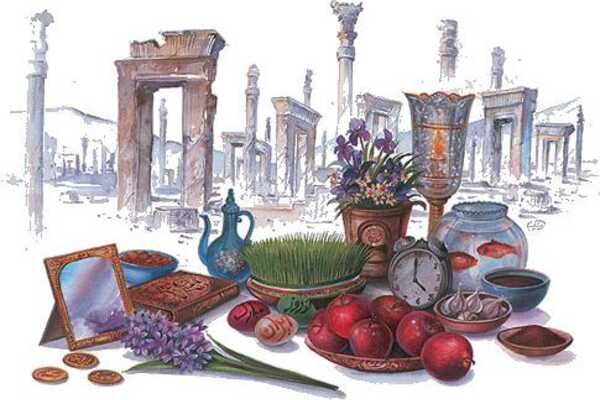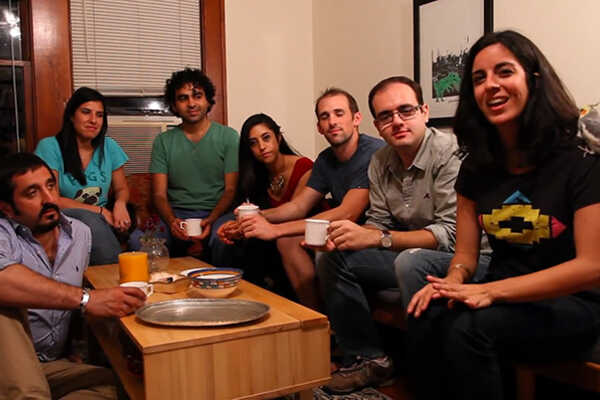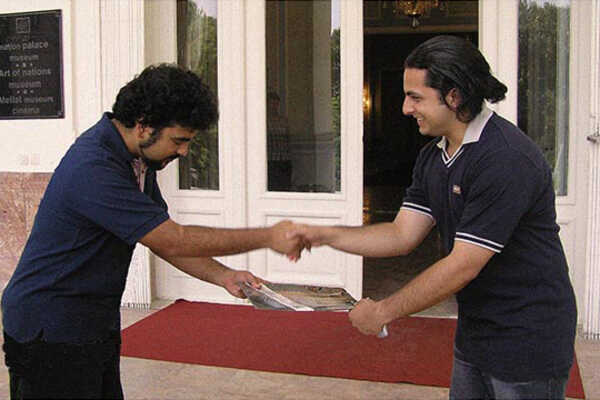Presenting our first video for Nowruz 1391!
This video goes through some of the vocabulary associated with the Persian New Year, called Nowruz. Also, for the first time, see Matt and Leyla in action! As always, PLEASE ENJOY.
Also, here’s the write up we did of for Nowruz last year, with more key vocabulary for the season-
It’s almost time for Norooz, the most important holiday in the Iranian culture. This holiday marks the beginning of the Persian calendar and occurs every year at the exact moment that spring starts. This year, it will occur on March 20, 2011 at exactly 6:21 central time in the United States, and the corresponding times around the world. It occurs at the same moment everywhere on earth, at the exact moment the earth enters the vernal equinox. However, we won’t be celebrating 2011 in Iran, we will be celebrating 1390, signifying the number of years after the birth date of Mohammad.
There’s a lot to be said about Norooz, which originated as a Zoroastrian festival, the oldest religion of Iran. We’re going to focus less on that and instead we will go over the traditions and fesitivities of Norooz, and learn a few key words that you can use!
So first of all, the word ‘no-rooz’ itself has a word you should recognize in there. We learned the word rooz in episode 3- it means ‘day.’ Nō means ‘new,’ so combined they form ‘new day.’
The first thing we should learn is how to say ‘Happy Norooz’, which in Persian is norooz mobārak!
Another way to say ‘Happy Norooz’ is aidé shomā mobārak.
Norooz first starts with the tradition of chāhār shanbé sooree. We’ll learn in a later lesson that chāhār shanbé means Wednesday. Soor means celebration or party, so this refers to the night before the last Wednesday of the year. This is a festival of light winning over darkness and also goes back to Zoroastrianism. In this night, fires are lit, and people jump over the fires saying the phrase zardiyé man az tō, sorkhié tō az man to the fire. This means, I will give you, the fire, my yellowness, or my paleness and my sickness, and you, fire, give me your redness, meaning your strength and vitality.
Another important preparation leading up to the New Year is the tradition of khooné takoonee. Khoonéis the word for house, and this phrase literally means ‘shaking of the house.’ During the few weeks before new years, Iranians work hard at making sure the house is impeccably clean. Not only is everything cleaned, but everything is organized, anything old or unused is gotten rid of, all the rugs are washed, and so on. In general, norooz is all about rebirth and renewal, which goes along with the spirit of spring. In addition to complete cleaning of the house, new clothing is purchased. At the moment of new years, everything you are wearing must be new right down to your socks and underwear!
Now let’s get to one of the funnest parts of norooz, the haft seen table. We did the numbers a couple of lessons ago. Haft means seven and seen is the letter ‘s’ in the Persian alphabet. So this stands for a table on which seven items are placed, all beginning with the letter s. You could say that this is our version of the Christmas tree, and it is the centerpiece of symbolism for norooz. Let’s go through the seven most common items!
Seeb- Seeb means apple. This symbolizes beauty and health.
Seer- Garlic, represents medicine and good health.
Serké- Vinegar, represents age and patience.
Somāgh- Somagh has the sound ‘gh’ in there we will be learning in a future lesson. Don’t worry about that for now. Somagh is the spice called sumac in English, and it represent the color of sunrise.
Senjed- This is something you might not have heard of before, the dried fruit of the oleaster tree. Apparently it symbolizes love.
Sabzé- This is one of the most iconic parts of the table. A couple of weeks before norooz, Iranians set dishes of sprouts, of either barley, wheat, or lentils and it grows into a sort of grass that is placed as the centerpiece of the table. The sabzé represents rebirth.
Samanu- This is a sweet pudding made from wheat germ, and it represents sweetness and affluence.
So there we have it, the seven seens, seeb, seer, serkeh, somagh, senjed, sabzé, samanoo. Other important items are usually placed on the table as well, such as a goldfish, representing life, and hyacinth flowers, representing rebirth and life as well, decorated eggs, representing fertility, and more.
Another exciting part of Norooz is Hāji Firuz. Hāji Firuz is a character that wears a red costume and sings and dances with a tambourine in the street to herald the coming of the new year.
So the moment of Norooz is spent with dear friends and family and loved ones, and immediately afterwards, you congratulate everyone around you on the new year. And then begins the lovely tradition of deed o bāz deed. This literally means, ‘to see and see again’. Norooz lasts 13 days, and during this time, all your friends and family must come visit you at your house, and you in turn must go visit them at their respective houses. Generally, you visit elders first, and then they in turn will come to visit and be hosted by you!
The thirteenth day of Norooz is called sizdah bedar. This day must be spent entirely outside in the park with a family picnic, often accompanied by music and dancing. At the end of the day, the sabzee, which as we learned before is the wheatgrass centerpiece of the haft seen table, is knotted with wishes and dreams, and thrown into the river, to be recycled into a life form again!
There’s so so much more to this wonderful holiday, but we will leave you with this for now. Thanks to google, if you need any more information, it’s just a click away!
Hope you are all having a good ending of winter and entering of the spring season and AIDÉ SHOMĀ MOBĀRAK!


